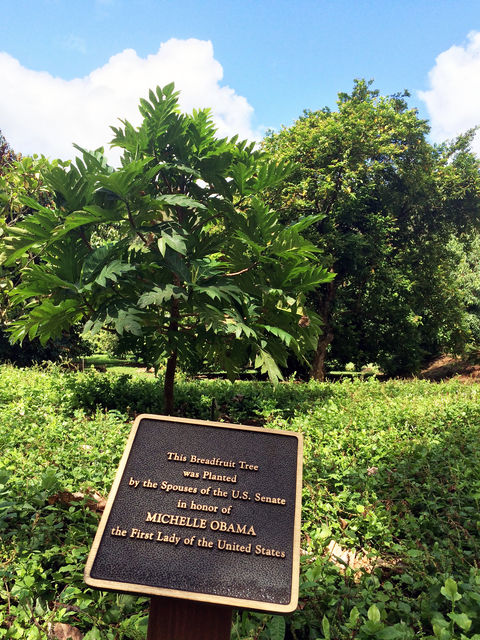KALAHEO — Breadfruit is versatile. You can bake it, fry it, boil it, mash it, pickle it, or turn it into dough.
In fact, the National Tropical Botanical Garden’s Breadfruit Institute is still finding new and innovative ways to use the starchy, potato-like staple food.
“Right now, we’ve just finished our Plant a Tree of Life project and so we’re focusing on education and teaching people how to use this fruit,” said Diane Ragone, director of the Breadfruit Institute.
During the Plant a Tree of Life project’s three years, 10,480 breadfruit trees were distributed in Hawaii and the Breadfruit Institute is doing a follow- up project to find out its impact.
Ragone said the institute is combining an aggressive educational campaign on the fruit’s uses with the follow-up project because it won’t be long before those 10,000 trees start bearing breadfruit.
“People need to know how to use the fruit once they get it,” Ragone said.
The project is one of many breadfruit tree placement initiatives in which the institute is involved. It has also partnered with Global Breadfruit, for instance, which sent 4,000 young breadfruit trees to Ghana in March, and the Global Hunger Initiative. That organization has placed trees in countries including Costa Rica and Nicaragua.
“We partner with community and global organizations to place trees,” Ragone said. “The institute itself is more of a research and educational facility.”
The Breadfruit Institute was formed in 2003. Under Ragone’s direction, it promotes conservation and the use of breadfruit for food and reforestation.
Now the institute has a collection of nearly 150 varieties of breadfruit — the largest and most extensive collection of breadfruit varieties in existence. The institute is working with a Canadian university laboratory, developing ways to micropropagate the plants.
In a nutshell, micropropagation is plant multiplication in vitro — it’s a way to grow a large number of the cloned plants in a controlled lab.
The institute has been successful in micropropagation in a few varieties of breadfruit, but kinks are still being worked out.
“It’s a really difficult process and it’s not easy to perfect,” Ragone said.
To date, through the Global Hunger Initiative, the Breadfruit Institute has distributed more than 73,000 trees to 37 countries throughout Africa, Asia, the Caribbean and Pacific Island nations.
Ragone said funding for tree distribution comes mostly from donors, nonprofits and foundations.
Anyone who received a breadfruit tree from the Breadfruit Institute’s Plant a Tree of Life project and would like to provide feedback can do so by emailing plantatreeoflife@ntbg.org.






